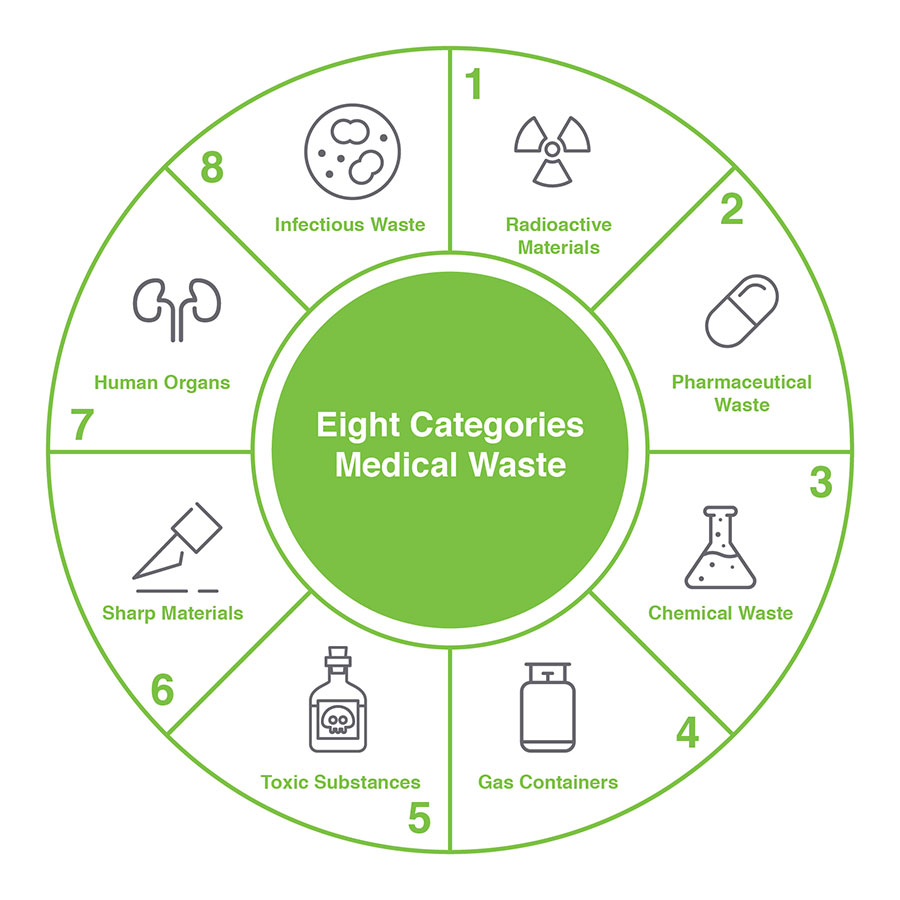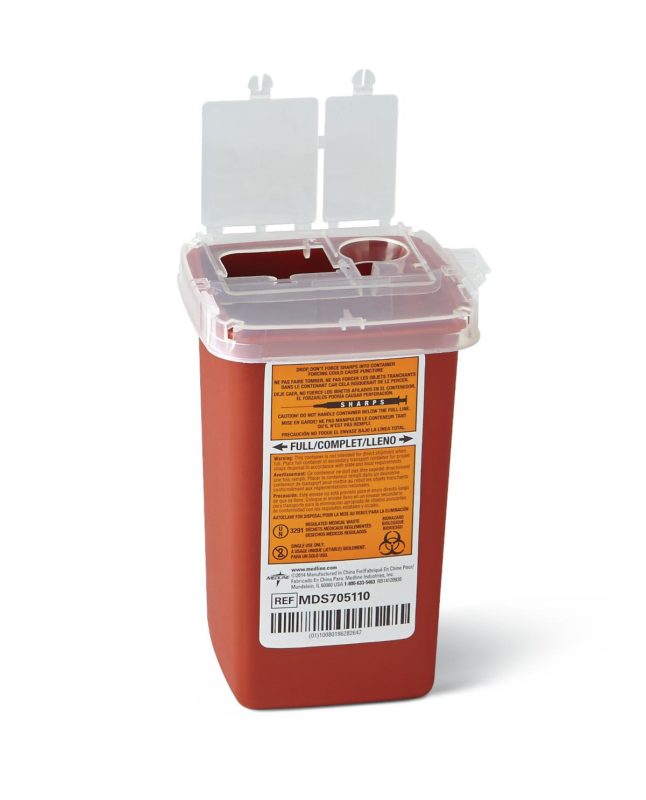Minimize Prices and Make The Most Of Safety: Effective Medical Waste Disposal Strategies
Reliable clinical garbage disposal methods are important for health care facilities to make best use of and decrease expenses security. With the growing problem for ecological sustainability and the enhancing number of laws bordering waste management, it is essential for healthcare companies to embrace compliant and reliable methods. By executing correct partition and categorization, reliable packaging and labeling, secure transportation and handling, effective therapy and disposal methods, and conformity with regulative standards, health care centers can make sure the safe and liable management of clinical waste. In this discussion, we will certainly explore each of these methods carefully, offering understandings and useful pointers for health care specialists to optimize their garbage disposal processes.

Correct Segregation and Categorization
Proper segregation and categorization are critical parts of effective medical waste disposal techniques, making sure the security of medical care employees, the general public, and the setting - medical waste removal. medical waste disposal services with WasteX. By dividing various sorts of medical waste at the factor of generation, health care facilities can decrease the danger of cross-contamination and potential injury to people and communities
One of the vital aspects in proper partition is the identification and category of medical waste. This entails categorizing waste right into different groups, such as transmittable, dangerous, contaminated, or pharmaceutical waste. Each classification calls for certain handling, storage space, and disposal techniques to avoid any type of adverse impacts on human health and the atmosphere.
Furthermore, appropriate partition also consists of making use of color-coded tags and containers to clearly recognize and differentiate the different sorts of medical waste. This assists medical care workers and waste administration employees to quickly identify and handle the waste properly. Red containers might be made use of for infectious waste, while yellow containers may be assigned for unsafe waste.
In addition to segregation, appropriate classification additionally involves the correct packaging and control of clinical waste. This makes certain that waste is securely stored and carried without posturing any kind of risks to individuals or the environment. Using leak-proof and puncture-resistant containers, in addition to appropriately securing and classifying them, aids to avoid any unexpected exposure or release of dangerous substances.
Efficient Packaging and Labeling
Efficient packaging and labeling play a crucial function in guaranteeing the reliable and safe disposal of medical waste. Proper packaging is important to protect against leak, damage, or spillage during transportation and handling. It helps to decrease the threat of contamination and shields health care workers, waste management personnel, and the setting from possible dangers.
Medical waste should be packaged in leak-proof and sturdy containers that are immune to penetrate and breakage. These containers should be properly secured to stop any leak. In addition, the packaging should have the ability to endure the conditions of transport, including temperature level variations and misuse.
Classifying is similarly important as it supplies important information concerning the contents of the waste and any kind of prospective hazards related to it. The labels need to include the name of the medical care facility, the kind of waste, and any type of special delivery directions. Clear and standard labeling makes certain that waste administration employees can quickly recognize and deal with the waste suitably.
Efficient product packaging and labeling also help in the correct segregation and classification of medical waste. Clear labeling enables very easy identification of various waste streams, such as transmittable waste, sharps, or pharmaceutical waste. This helps in simplifying the disposal process and making sure that the waste is dealt with or gotten rid of according to regulatory guidelines.
Safe Transport and Handling
Ensuring the safe transport and handling of clinical waste is of utmost importance in order to avoid any kind of possible health and environmental dangers. Clinical waste, such as sharps, contaminated materials, and pharmaceutical waste, should be appropriately packaged and managed to decrease the risk of exposure to damaging compounds and virus.
Transporting medical waste needs compliance with stringent guidelines and standards established by neighborhood authorities and ecological agencies. These policies aim to safeguard the health and wellness and security of workers included in waste administration click resources and stop the launch of harmful products into the atmosphere.
To guarantee risk-free transport, clinical waste needs to be positioned in watertight and puncture-resistant containers that are appropriately secured and identified. These containers ought to be secured in a way that stops spills or damage throughout transit (medical waste removal near me). Additionally, it is vital to make use of specific vehicles equipped with suitable security functions to deliver clinical waste. These lorries need to have ample air flow and be developed to prevent leak or contamination.
Taking care of medical waste also needs correct training and adherence to safety protocols. Workers associated with the handling of clinical waste must put on appropriate personal protective devices (PPE) such as handwear covers, masks, and dress to lessen the threat of direct exposure. They should also follow strict hygiene methods to stop the spread of infections and make sure the secure disposal of waste.
Reliable Therapy and Disposal Approaches
Applying appropriate therapy site here and disposal approaches is crucial in managing medical waste effectively and minimizing potential health and ecological threats. Clinical waste, which consists of sharps, contagious materials, chemicals, and pharmaceuticals, can position significant hazards otherwise taken care of and taken care of effectively. There are numerous therapy and disposal techniques available that follow governing standards and promote safe techniques.
One common method is incineration, which includes shedding the waste at high temperature levels. Incineration works in damaging virus and lowering the quantity of waste, yet it can launch unsafe toxins right into the air otherwise effectively regulated. It is crucial to use contemporary incinerators equipped with emission control modern technologies.
An additional technique is autoclaving, which utilizes steam and pressure to decontaminate the waste. Autoclaving works in killing virus and minimizing the volume of waste, but it requires mindful tracking and maintenance to ensure correct performance. The decontaminated waste can then be safely thrown away in a landfill.
Chemical treatment is an additional alternative, which includes using anti-bacterials or various other chemicals to neutralize virus. This technique is typically used for view it now fluid waste, such as laboratory samplings. Nevertheless, it is necessary to make use of suitable chemicals and follow correct procedures to make certain efficient therapy and avoid ecological contamination.

Conformity With Regulatory Guidelines
Abiding by governing guidelines is crucial in guaranteeing correct compliance with medical garbage disposal practices. These guidelines are placed in area to safeguard public wellness, prevent environmental contamination, and preserve office safety. Compliance with governing standards is essential for health care centers, as non-compliance can result in penalties, fines, and reputational damages.
Regulative standards detail the appropriate handling, storage space, transportation, and disposal of medical waste. These guidelines also deal with the segregation of different waste streams, such as sharps, infectious waste, and pharmaceutical waste.
To maintain conformity, medical care centers need to develop thorough waste monitoring programs that consist of personnel training, regular audits, and ongoing monitoring. It is necessary to maintain current with any type of updates or changes to regulatory standards, as methods may evolve over time. By remaining notified and executing proper methods, health care facilities can reduce the possibility for regulative violations and shield the health and wellness of their staff, people, and the surrounding community.
Verdict
In final thought, implementing reliable medical garbage disposal methods is important for minimizing prices and taking full advantage of safety. Appropriate segregation and classification, efficient product packaging and labeling, safe transportation and handling, and reliable treatment and disposal techniques are crucial steps to make certain compliance with governing guidelines. medical waste removal near me. By adhering to these approaches, healthcare centers can shield the atmosphere and public wellness while also lowering economic concerns related to medical waste administration
By carrying out appropriate partition and categorization, effective product packaging and labeling, safe transportation and handling, efficient therapy and disposal methods, and compliance with regulative standards, medical care facilities can guarantee the responsible and safe administration of clinical waste. Red containers might be made use of for infectious waste, while yellow containers may be designated for harmful waste.
Clear and standard labeling makes certain that waste management personnel can quickly determine and manage the waste suitably. (medical waste disposal services with WasteX)
Clear labeling allows for very easy recognition of different waste streams, such as infectious waste, sharps, or pharmaceutical waste. These standards likewise deal with the segregation of various waste streams, such as sharps, transmittable waste, and pharmaceutical waste.